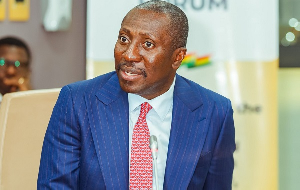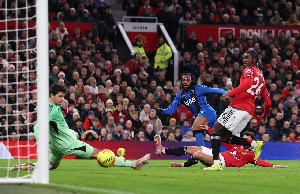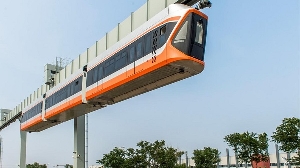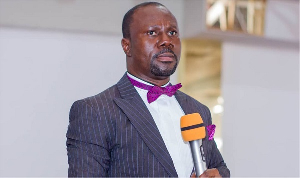Friends, do not take the silence of AMERI’s supporters on this platform and in the open media to mean aloofness or nonchalance.
They have been hard at work, especially on WhatsApp and in private briefings, doing all they can to discredit IMANI’s campaign to persuade the public to view the deal as the “greatest swindle of the Ghanaian state in at least two decades”.
Since our responses have been fragmented across different posts, discussion threads, and ripostes across multiple platforms, we have been advised to assemble them all in one place in order to vindicate our campaign. We now have the pleasure and duty to proceed to do so.
Let us take just the main arguments that are being canvassed by pro-AMERI activists.
They have said that IMANI’s analysis of the financial terms of the deal is shallow because it assumes that such a deal can only be assessed in one way, when in fact different methods can show that it is a very fair deal.
IMANI is underestimating the cost of installing the turbines and exaggerating the profits made by the middle-men (brokers) because it does not understand IRR, NPV, and Discount Rate analysis, they insist.
How do we plead to this charge? Firstly, no one, at least, disputes the cost of the TM2500+ mobile aeroderivative gas turbines that were bought (in actual fact, the TM2500+ is the composite ‘power plant in the box’; the turbine itself in that box is the LM2500 aeroderivative engine).
And that is because no one can. Right there in Annex A to the agreement, its supplier and specifications are fully provided. The machine was acquired from APR, a recommended supplier of GE, by the brokers. APR openly lists the price of these machines. There is thus no dispute that the machines together cost $220 Million, and most likely less if bought in bulk.
As to why Ghana had to go to AMERI for AMERI to go to METKA for METKA to go to APR in order to acquire GE equipment, let’s leave that aside for now. Anybody with the most basic training knows that if something costs $22 million each and you want to acquire ten of them you would normally be entitled to a discount.
You can prove the point by walking to Kingdom Stationery and ordering 10 workstations at a go. I assure you a 15% discount off the catalogue price would be yours, but let’s even assume that the original procurers were obtuse enough to pay $220 million.
(Indeed in the World Energy Outlook database, per MW capital cost for gas turbine power is $500,000, so the $900,000 implied by the catalog price is precisely what you expect to see at catalogue price level, but let’s not over-flog the point.)
The $220 million is the engineering cost. Everyone knows that even if a machine, such as this one, has been designed as turnkey (literally, buy today, turn the key, and voila it starts working) one still need specialists to install, test and then commission it.
One also needs to plug it into whatever network is supposed to receive the output the machine generates. Also if somebody buys something on your behalf they deserve to be paid what in Ghana is called T&T.
Note however that in this case, unlike the case in a normal power plant, all that was needed was to integrate the turbines with the national grid equipment.
In fact, GE offers to install the machines for you in eleven days or even three days if as a user you don’t need a test run! You don’t have to have more than a JHS education to understand that what we are talking about here is not the building of Akosombo dam and township.
It is literally assembling a bunch of gizmos for cooling, firing up, and transmission of the generated power into the national grid.
As far as the transformers, civil works, utilities and sewers/tubing/tunnelling are concerned, Government of Ghana was responsible for bearing that cost. Supposing you bought a generator plant for installing in your factory for $22,000.
How much will you pay to install it? In Ghana’s case, continuing this analogy, we paid $14,000 because somehow we felt that even that part of the project should be handled by someone else and be billed as additional. But that is not even the main quarrel here.
Many anti-AMERI activists are not even taking the deal makers to task for paying $140 million on top of the $220 million to install a plant that from our analysis of several deals involving a EPC contractor cost of procurement, installation and commissioning almost never cross 10% of the total cost.
We are tearing our hair out because the government then went ahead and paid AN ADDITIONAL $150 million on top of things, citing something called ‘NPV analysis’ and ‘Balance of Plant’.
Yet, all one has to do is take a look at Annex E of the agreement and it is clear that the main core of this ‘balance’ that needs to be added to the turbines for the system to be complete and operational comprises merely of the exhaust module, the air intake nozzles and the data logging platform in the control room, all of these being assembly units clearly stated as standard and pre-packaged with the turbines!
All that is required, external to the weatherproof package and its trailer mounts, and in lieu of a complex structure, is the piping for coolant and fuel filtration and transmission.
So the “balance of plant” essentially refers to the fuel and coolant (‘demineralised water’) storage and dispensing system/controls that can be acquired for a few hundreds of thousands of dollars; and the earthing and electrical cabling works.
We are not talking here about giant buildings; or treatment systems; fire control was provided; ventilation is integrated, as is instrumentation; and security and fuel logistics handling is minimal because the plant is housed at the existing Takoradi Thermal Power station and shares its facilities.
And at any rate, the government of Ghana was billed separately for civil works, drainage and sewerage etc! So what serious ‘balance of plant’ are we talking about here exactly?
For a project that the manufacturer of the system says can take between 3 and eleven days from start to finish, we decided that for the work done in acquiring the plants and installing them (EPC), we will pay the brokers 65% of the total equipment cost due to our unwillingness to procure our own financing and then hire any EPC contractor for a few hundreds of thousands of dollars to commission the plants.
Anti-AMERI activists are willing to accept this $140 million dollar charge as pure financing costs (since the engineering, procurement, construction and commissioning activities in this project are hardly of serious note).
And had we left things there, the NPV analysis using an 8% discounting rate would have netted a decent aggregate profit of $72 million cool profit for the dealmakers, showing a 32% return in 5 years. Indeed, readers are welcome to take a look at how reasonable this rate of return is in a period of serious constraint in the energy plant financing industry. It is important to bear in mind when reviewing these calculations that cashflow from the investment is assured on a monthly basis; a graduated interest rate structure is required to fully appreciate the fixed cashflow; AMERI sought and secured exemptions from ALL domestic taxes in relation to the project; we are in a period of unprecedented low global interest rates; and there is a standby letter of credit to cover any defaults under every conceivable scenario in the one-sided agreement that was foisted on the Government of Ghana. AMERI enjoyed all of this PLUS a Performance Bond too (yes).
In fact, under the agreement, AMERI gets paid whether or not fuel from the government to produce electricity is forthcoming, and regardless of faults in the national grid.
It is easy to see how generous the deal at this level would have been when one benchmark against reference data globally.
The discount rate in Turkey itself is 5.25%. But the Ghanaian dealmakers felt that such prudence would not earn them any applause for being spectacular. So they upped the ante, and agreed to an additional $150 million on top of this for AMERI.
The party that did not procure the equipment, install a pipe, or turn even a valve on, but rode on the back of METKA and APR to secure the equipment and on PPL and Engineers & Planners to install and turn it on, gets a cool $122 million in NPV terms just for having swag! Frankly, that is where NPV analysis leads us.
And it sure as night follows day exonerates no one. In fact if we use as the discounting rate the cost of borrowing in the local USD credit market and compute the NPV of the margin for AMERI on the deal (relying on our generous EPC project value of $250 million), we get exactly $150 million! That is precisely the amount we overpaid if we measure against the alternative of borrowing from a consortium of local banks to buy the plant outright and getting the authorised supplier, APR, to install and commission. Any which way pro-AMERI analysts dice this, a $150 million loss cannot be argued away. For further clarity, see below a table providing comparative lending rates for various projects in the energy sector. But pro-AMERI analysts seem to believe that they have one ace up their sleeves. In some of the briefings, we have seen the argument appears to be that AMERI is producing cheap power and that cannot be the case if the capital cost of the plant is bloated (though as you can see from the other table attached, the capital cost is indeed the highest in Ghana). Fair point: how can an exorbitantly priced machine produce cheap trinkets? When some of us first heard this argument, frankly, we thought it was a joke. On top of selling the machines to Ghana at an exorbitant price and compelling us to provide fuel to power it, AMERI then went ahead and inserted a cool 0.5 US cents per kilowatt hour charge for the power that we shall be producing from equipment that we are paying for using fuel that we are supplying, netting them a neat $16.6 million a year! And though the agreement says that the plant gets handed over to the Government of Ghana if we keep up with all our payments, they still managed lock the power tariffs in the post-transfer period in an obvious ploy to ensure that even after handing the plant over to us they can still run the show (hence the efforts to get another plant at the Takoradi Power Station handed over to them). The combined tariff of 62 pesewas per kilowatt-hour that AMERI itself discloses in the agreement may be compared with the 2016 August Bulk Generation Charge that PURC has allowed other power plants in Ghana to charge on average: 35.97 pesewas! AMERI is thus, in fact, nearly 75% more expensive than the average power plant in Ghana. And we haven’t even factored in the cost of fuel. Consider that without a revision of the agreement, AMERI will be operating what is, in essence, a separate price-gouging regime in the country, in defiance of the PURC, that shall see Ghanaians paying almost twice for its power if we don’t act soon to shave off some of the $102 million a year it has managed to squeeze out of our diffident State. In view of all the foregoing analysis, IMANI’s simple view is that the Government of Ghana should not relent until it has managed to shave off two million dollars from each monthly payment. Duty calls on every Ghanaian to join this campaign.
Opinions of Thursday, 13 April 2017
Columnist: Imani















